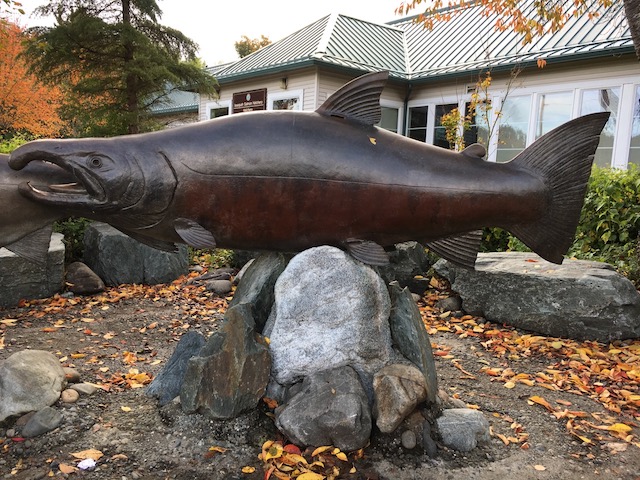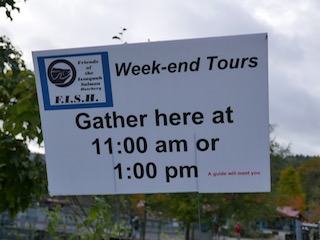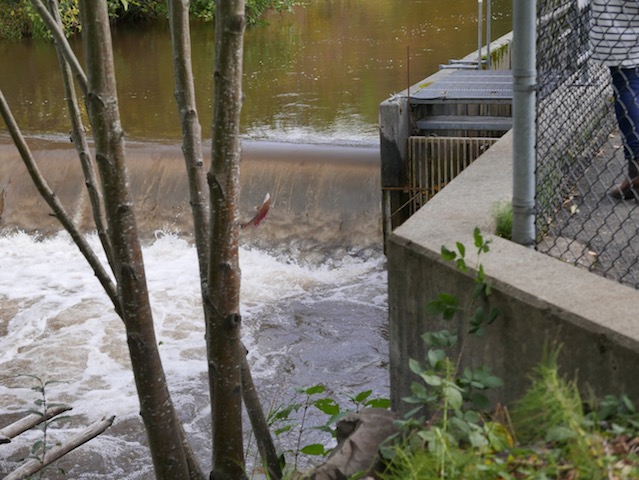Friends of the Issaquah Salmon Hatchery
I have always admired the epic journey of the Pacific salmon ever since I read about it as a teenager. I have eaten plenty of salmon, and I have learned about salmon throughout the years from both Seattleites and transplants, which gave me a deeper appreciation for them. Today Eric and I took a field trip to learn more about salmon spawning in the autumn at a salmon hatchery in Issaquah; known as Friends of the Issaquah Salmon Hatchery, also known as FISH.
A lot of useful information was provided on tour. This is what we learned from the Docent, the educator, who presented the tour.
Main Points of the tour
The hatchery started in the 1930s to restore salmon to the river. At the time, the hatchery didn’t’ have any fish because it was decimated by logging, mining, and coal.
They got the salmon from another river.
In the 1970s, they were going to close the hatchery, because it was expensive to run it. However, the people of Issaquah volunteered to run it for free.
Now, volunteers do most of the work. If you like to volunteer, they are taking volunteers, now.
On our day of the visit, the water was muddy. Muddy water was filled with silt this year, which is very bad for salmon. The silt in the river covers the salmon eggs and suffocates the eggs. It is possible that few eggs if any will hatch, this year due to the silt flowing down the creek.
The reason for the silt was because of the recent logging and development. The water no longer gets a chance to sink into the ground and instead flushes dirt into the river. There isn’t enough trees, grasses, bush or other vegetation on the surface to slow down the water to sink into the ground before entering the stream. Instead, it rushes over the surface and carries with dirt into the creek.
And the recent rain stirred up more silt.
It is hard for salmon to swim through the fish ladder when the water is muddy. The water irritates their eyes because they don’t have eyelids to protect them against the dirty water
A female salmon lays thousands of eggs. Most eggs will die, or predators will eat them. Ducks, kingfisher, raccoons herons (that must have been why we saw a heron hanging out on the roof, it smelled the salmon), and even other fish are all considered predators.
Of those eggs that reach maturity and swims to the ocean, only a few dozens make it back due to barriers and predators.
The hatchery let some of the salmon go upstream not all of them because the holding capacity of the river isn’t that great for all the salmon coming back.
The hatchery fertilizes the salmon themselves.
Before salmon are released from the hatchery, their adipose fin is removed. This helps identify them as hatchery-raised fish. When a fisherman catches salmon, they are supposed to release any salmon that still have their adipose fin. This helps protect the wild salmon population. Removing the adipose fin does not affect the salmon’s ability to swim and is an easy way for them to mark the salmon as hatchery-raised.
They chop off all the tails of the dead salmon that they used to fertilize after they get the eggs, and throw the dead salmon without tails in the river. This is so that they can fertilize the river with the dead salmon bodies.
There were questions about fish farms and wild salmon from the audience.
There was not much talk about fish farms other than they are not helpful for the wild salmon.
One of the audience members brought up the recent release of Atlantic salmon around the Pacific Northwest.
The conversation continued that the Atlantic salmon is bad for the Pacific salmon gene pool. Atlantic Salmon should not be in the Pacific Northwest. Having Atlantic salmon fish farms threatens, the native wild salmon. If they mate, they produce sterile offsprings.
The government says that you are free to catch as many Atlantic salmon in the Pacific Northwest.
The wild Pacific salmon is at a threatening low number which raised another question
What can a regular consumer do to help protect salmon?
One of the ladies in the group said, call your congressperson to fight for environmental protection.
Tidbits: you can schedule a tour during the week. You are free to walk in during the weekends of the salmon spawning season, which is in autumn. Check their website for updated times.
FISH accepts a donation. There is a sign that says, “Feed Finley.”
Parking: we parked on the street.




